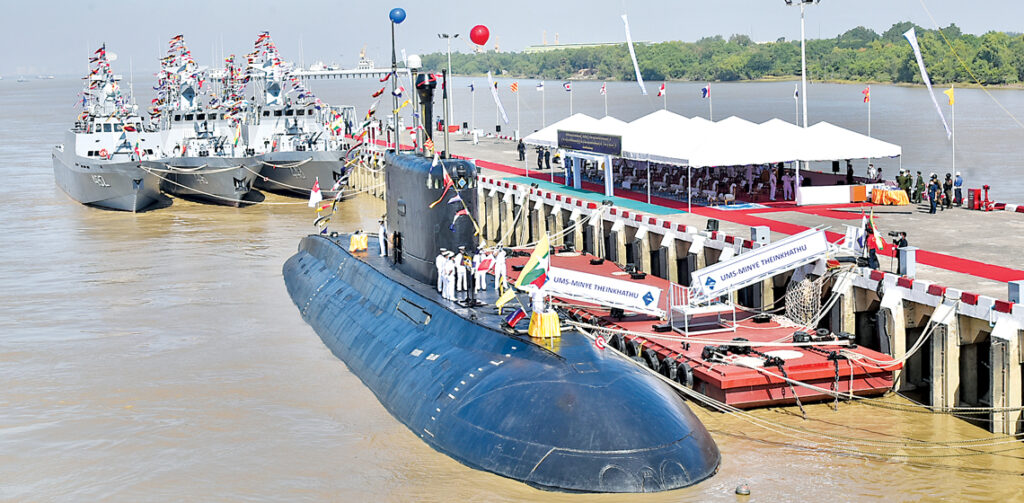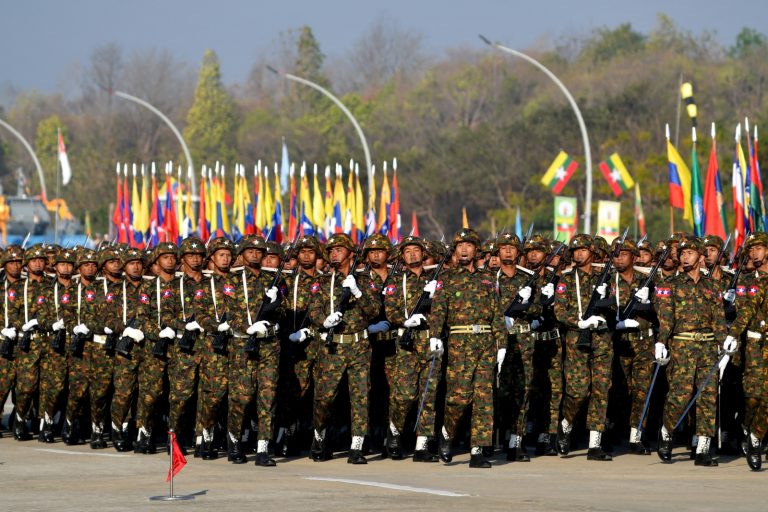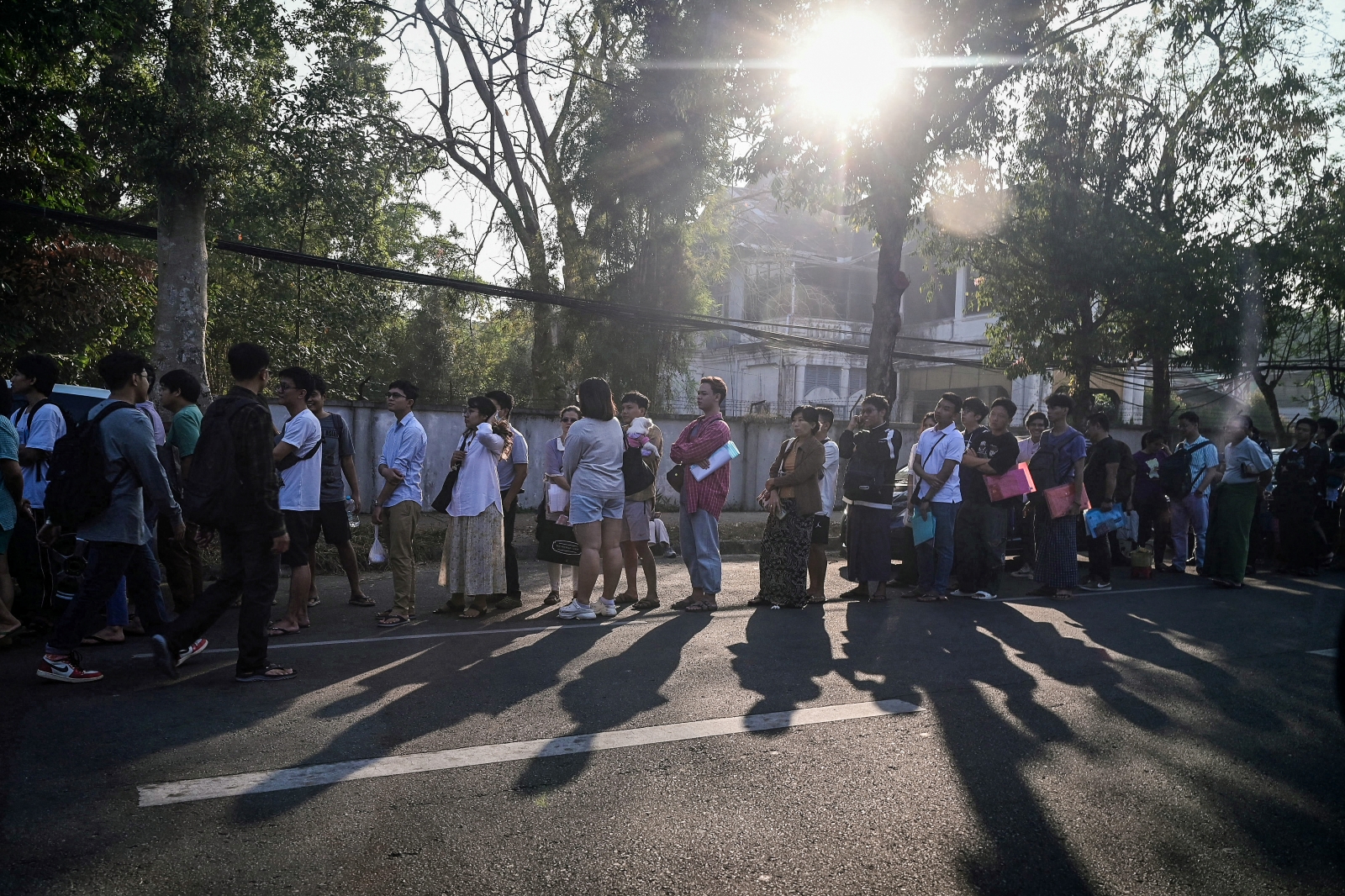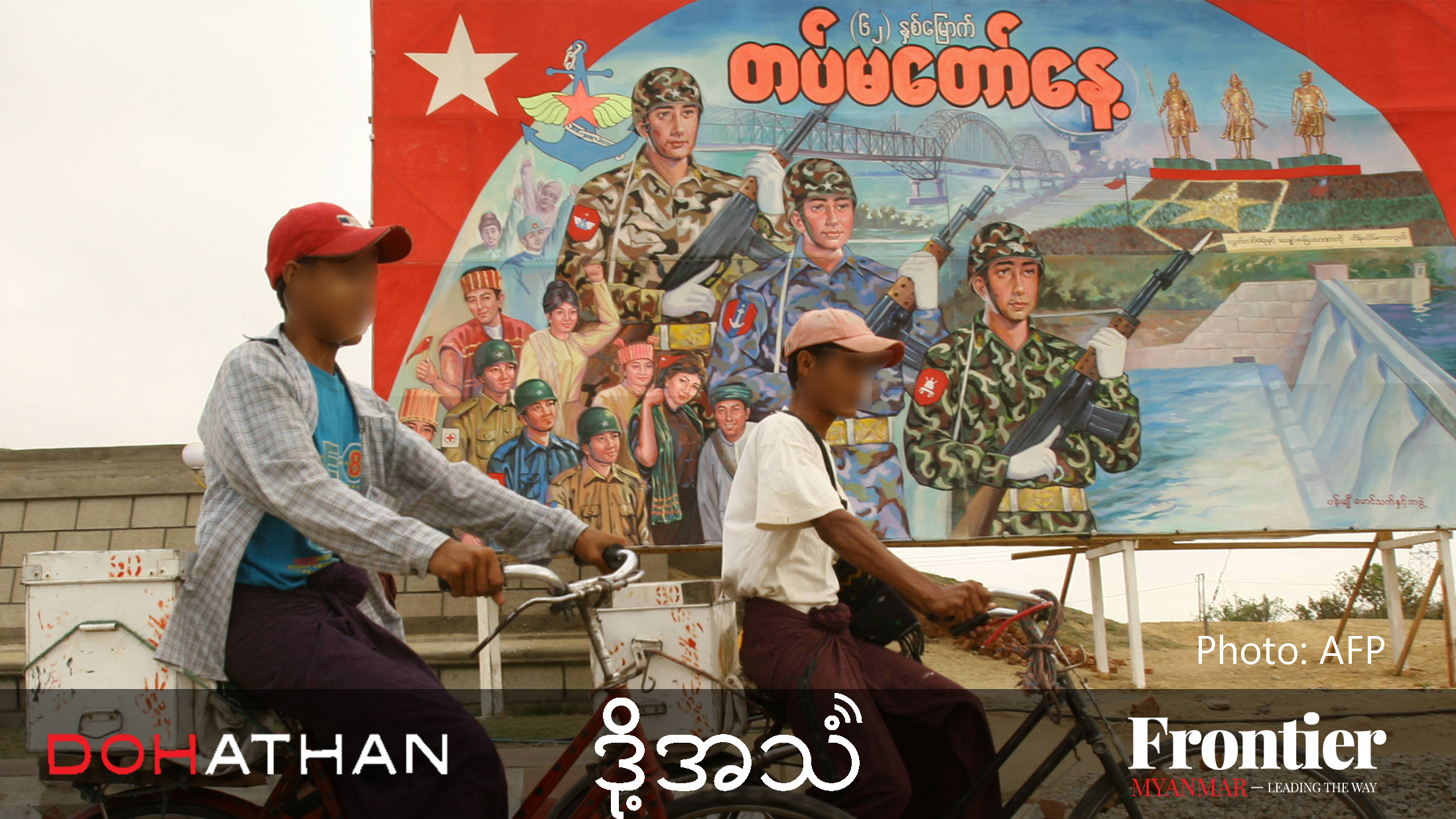An Indian state-owned company has sent Myanmar large amounts of fuel suitable for warships since the military seized power in 2021, but the actual recipient is shrouded in secrecy.
By FRONTIER
Data for this story was provided by C4ADS, a Washington DC-based global security nonprofit that also helped with analysis.
Since the military coup in February 2021, a state-owned Indian company with a history of selling to Myanmar military suppliers has sold more than US$3.7 million in fuel – including over $1.5 million in navy grade diesel – to a mysterious Myanmar consignee listed in contracts only as “The Master”.
These shipments make up a small fraction of the nearly $284 million in various types of fuels, as well as oils, gasoline and other related materials, that the Indian Oil Corporation Limited has sold to Myanmar since trade first began in 2017, according to trade data provided to Frontier by C4ADS.
In the first year and a half after the coup, the majority of these shipments consisted of engine oils, motor spirits, lubricants and brake fluids manufactured by Servo, India’s largest oil and lubricant brand, owned by IOCL.
Most of the Servo exports were sent to Myanmar Chemical & Machinery (MCM), a crony-owned company accused of brokering arms for the Myanmar military. MCM and its director, Aung Hlaing Oo, were sanctioned by the United States, Canada and the United Kingdom for procuring weapons for the junta in March 2022
Shortly after, the IOCL stopped shipments of Servo products to MCM, but exports continued of two different types of fuel – Fuel Oil 380 CST and navy-grade Low Sulphur High Flash diesel (LSHF HSD) – both of which IOCL had been sending to “The Master” since 2017.
However, the opaque nature of the trade, and the possibility the fuel could be ending up in military hands, has raised alarm bells.
“IOCL’s supply of navy-grade fuel to an undisclosed consignee in Myanmar carries a high risk that the end user could be the Myanmar Navy, and [IOCL] should disclose who the importer and end user is,” said Daw Yadanar Maung, spokesperson for the investigative activist group Justice For Myanmar.
From 2017-2020, IOCL also sent more than a dozen shipments worth close to $140 million of aviation turbine fuel to Singaporean company Puma Energy Supply and Trading and its parent company Trafigura. In 2022, Amnesty International identified Puma Energy, which exited Myanmar in October of that year, as the “the main foreign business actor involved in the supply chain of aviation fuel” to the Myanmar air force.
Recent diesel shipments from IOCL with listed vessels have all gone to two Myanmar ports controlled by Asia World, another conglomerate with close ties to the military. Asia World was sanctioned by the United States from 2010 to 2016 for its alleged role in supporting the previous junta. Other shipments have no vessel listed, and therefore the port is unknown.
But either way, from the port, it’s virtually impossible to know where the fuel imports – including the navy-grade diesel – end up.
U Ba Hla Win*, a researcher focussed on Myanmar’s energy sector, said that after the fuel arrives in the country, it’s kept in tanks for 30 days as reserves, after which the Fuel Oil Supervisory Committee sets its retail price. Then it’s released back to the importer to sell.
“Everything is imported in bulk. Some of the importers are suppliers to the Myanmar military and they will simply sell it out. But the trade data for fuel imported to Myanmar is not only for military use, it’s also for everything,” Ba Hla Win said.
Clouded in secrecy
Most fuel imports, such as those from Singapore and Indonesia, are overseen by the Myanmar Petroleum Trade Association, a group of private companies. However, those coming from India are managed separately by the regime’s Petroleum Products Regulatory Department, according to a PPRD representative who refused to comment further.
The fuel’s final destination is not the only part of the supply chain clouded in secrecy. Despite showing up as the buyer on dozens of shipments in the trade data, “The Master” is not a real entity – it’s a placeholder used when the real buyer or consignee is unknown or unspecified.
IOCL’s regulations for marine fuel sales stipulate that if a buyer is missing in a contract, they will be named as the vessel supplying the fuel or simply as “her master”.
“If they don’t have a final consignee, they will sometimes just say to ‘the order of The Master’. That is just a default entry when the bill is consigned ‘to order or assigns’ i.e. they don’t know who the consignee is at the time of loading or the trader involved wants to on sell the cargo by endorsement later,” explained Captain Rohit Bhatia, the founder and group managing director of maritime business consultancy, Wade Maritime Group.
“But this is not correct because the master of the ship or the captain of the ship is the employee of the ship owner or carrier. He would never be the consignee…It would be as though you were moving house and you employ a trucking company and the trucking company gives you a receipt and they put the driver as the receiver. It doesn’t make sense.”
However, Bhatia said this practice is legal and allows for the buyer to be determined at a later date.
According to the trade data seen by Frontier, IOCL and other Indian companies have used the placeholder to send a variety of goods to unknown recipients in multiple countries around the world, including other shipments of navy-grade diesel.
In instances where “The Master” is listed as the consignee, including with the shipments to Myanmar, Bhatia said that it’s “very very probable” that traders or buyers have specifically requested this in order to conceal their identities.
All IOCL shipments to Myanmar that list “The Master” as the consignee were shipped from either the Kattupalli Sea Port or the Chennai Port, both in southeastern India. Any information known about the real buyer of these shipments before they were exported would be included in their bills of lading or in port records, neither of which are typically made public.
Neither IOCL, India’s Ministry of Commerce nor its Directorate General of Foreign Trade responded to numerous requests for comment.

Military use?
Both types of fuel IOCL has been exporting to Myanmar are petroleum fuels, which have many different uses, said Ms Lydia Powell, an energy expert and the head of the Centre for Resources Management at the India-based Observer Research Foundation.
“Petroleum fuels, especially diesel and its various types, can be used in boats, ships, power generators and a variety of other mobile tools and weapons,” she said. “They can literally run anything – from a small boat to a power plant.”
Fuel Oil 380 CST is often used for power generation, marine bunkers and industrial heating plants, while LSHF HSD is a denser type of oil categorised as navy grade by Bharat Petroleum, another one of India’s leading energy companies, and is normally used by navies and the shipping industry.
Since the coup, Myanmar has imported 4,077 metric tonnes of Fuel Oil 380 CST and another 1,628 metric tonnes of LSHF HSD. While a smaller share of the imports, it’s the LSHF HSD that experts have found particularly interesting.
Mr Vijay Sakhuja, a former officer in the Indian navy and the former director of India’s National Maritime Foundation, said that LSHF HSD, also known as Low Sulphur High Speed diesel, is very commonly used in submarines and warships.
“Most navies consume a similar type of fuel that is called low sulphur high speed diesel, as we call it in India – LSHSD,” he said. “[It’s] a fuel for engines, for propulsion, because it’s low sulphur, which gives more efficiency.”
The shipments of Fuel Oil 380 CST and LSHF HSD are specifically marked in the data as “ships store”, a designation usually used when referring to materials kept on board and used for maintenance purposes.
Sukhaja believes that the fuel might be part of an earlier contract, possibly to service the kilo-class diesel-electric submarine that India gifted Myanmar in 2020.
“Some of the parts in the submarine require certain oils, and these oils may have been very specific, and may have been part of the contract,” he said.
Good relations
The fuel trade is just one example of the close ties India has maintained with Myanmar since the coup.
Yadanar Maung said that the shipments “further highlight Indian complicity with the Myanmar junta,” and that they come “on top of India’s legitimisation of the illegal junta as a government.”
A May 2023 report from the United Nations Special Rapporteur on Human Rights in Myanmar said that both public and private companies in India have shipped more than $51 million worth of “arms, materials and associated supplies” to the Myanmar military and its known arms brokers since the coup.
Sakhuja noted that while some fear the junta may try to strengthen ties with China at the expense of India, the relationship between the Indian and Myanmar navies remains “very, very good”.
“There are no problems which I can see,” he said. “They participate in [naval] exercises, contribute to discussions, capacity building, and training.”
India has also shown interest in further involvement in Myanmar’s energy sector. In 2020, the IOCL threw its hat in the ring to rebuild a shuttered refinery in Yangon’s outer Thanlyin Township for $6 billion. Reports circulated last year that the IOCL had taken control of the refinery and was expected to start operations in 2027, but Frontier was unable to independently verify this.
Indian state media also reported last year that another state-owned fuel company, Numaligarh Refinery Limited, would set up retail fuel outlets in the wartorn Sagaing Region, but no further information about that has been made public.
“India is always interested to invest in the energy sector, not just to support the [Myanmar] navy but because… if India gets in, it will [control] the full market,” said Ba Hla Win. “There is no refinery business in Myanmar… so if you can invest in and run the refinery, then you will become the monopoly.”
Additional reporting by Savanna Slaughter







